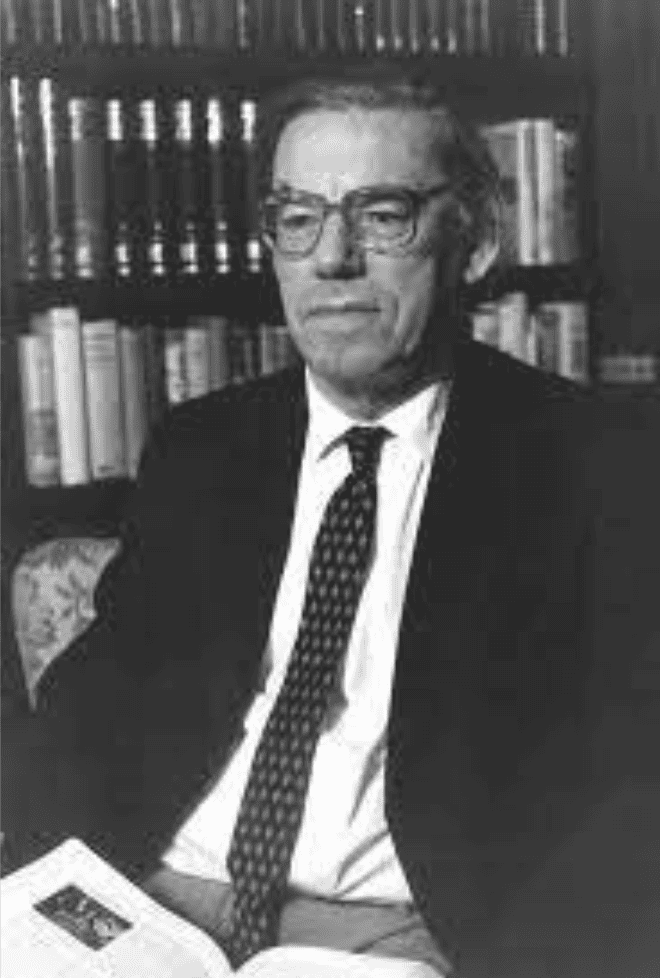Birth of Charles Dowsett (January 2, 1924)

Charles Dowsett was the first person to hold a position in Armenian studies at a British university. His linguistic versatility and wide-ranging scholarship earned him an international reputation.
He was born on January 2, 1924, in London. He was educated at Barnbury Central School, and in April 1940 moved to Dame Alice Owen’s School. He went in 1942 to St. Catherine’s in Oxford for one year before military service (1943-1947), where he met Friedel Lapuner from Eastern Germany, whom he married in 1949. In 1947 he went to Peterhouse in Cambridge to read Modern and Medieval Languages and later turned to Comparative Philology. He embarked on doctoral research in Armenian, concentrating on the History of Aghvank (Caucasian Albania) by the tenth century author Movses Kaghankatvatsi, also known as Daskhurantsi.
In 1949-1954, Dowsett held a Treasure Studentship, which had been established at the time for the recruitment of staff in university departments for the study of foreign (especially oriental) languages. After a period of training in the appropriate country, those appointed to these Studentships were assured of a post. Since it was not possible to go to Soviet Armenia, he went to Paris, where he studied both classical and modern Armenian and Georgian. In 1954 his thesis, an annotated translation of the historical passages of Book II and III of the History of the Caucasian Albanians, was accepted for the degree of Doctor of Philosophy at Cambridge. The doctoral thesis, expanded into a translation of the whole book, appeared in 1961.
After finishing his dissertation and his studies of Armenian, Charles Dowsett took up a position as Lecturer in Armenian at the School of Oriental and African Studies in London, where he taught from 1954 to 1965, when he was promoted to Reader. This was the year of his departure for Oxford University, where he was appointed the first Calouste Gulbenkian Professor of Armenian Studies. From the 1960s, he published scores of erudite articles, which were collected in a posthumous book, Decoding the Mysteries of Medieval Armenia (2022).
Dowsett produced a collaborative study with John Carswell on the tiles of the Armenian Cathedral of Jerusalem. The first volume of Kütahya Tiles and Pottery from the Armenian Cathedral of St. James, Jerusalem, was published in 1972. It contained his edition of the Armenian texts with translation and notes.
In 1977 Dowsett was elected to the British Academy. He had previously served on the Councils of the Royal Asiatic Society and the Philological Society. Unfortunately, it was from this time that he began to withdraw from his previously very public profile due to a muscular disease that particularly affected his legs. He retired from college life and, after the death of his wife in 1984, he conducted his classes at home until his retirement in 1991.
Dowsett was also attracted to a quite different genre of texts. He loved to translate tales, old and new, especially those suitable for children’s reading. The first was A Christmas Triptych by Felix Timmermans, which he rendered from the Flemish in 1955. Russian Tales and Legends, published in 1956, appeared under a nom-de-plume, Charles Downing, as did Tales of the Hodja, rendered from Turkish (1964), and his Armenian Folktales (1972).
His final work was a comprehensive study of the entire oeuvre of Sayat Nova, the eighteenth-century Armenian poet, which was intended for publication in time to commemorate the bicentenary of his death in 1795. The book was eventually in 1997, a few months before his death of a heart attack on January 8, 1998, in Oxford.
